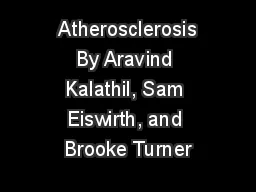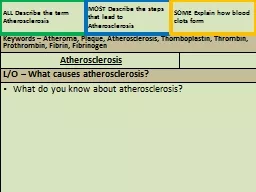PPT-Atherosclerosis By: Sara Darnell, Alexis Davidson, and Megan Fulhorst
Author : mitsue-stanley | Published Date : 2018-10-30
What is Atherosclerosis Plaque builds up on artery walls causing the body to be deprived of oxygen Plague is made up of many substances from the blood Atherosclerosis
Presentation Embed Code
Download Presentation
Download Presentation The PPT/PDF document "Atherosclerosis By: Sara Darnell, Alexis..." is the property of its rightful owner. Permission is granted to download and print the materials on this website for personal, non-commercial use only, and to display it on your personal computer provided you do not modify the materials and that you retain all copyright notices contained in the materials. By downloading content from our website, you accept the terms of this agreement.
Atherosclerosis By: Sara Darnell, Alexis Davidson, and Megan Fulhorst: Transcript
Download Rules Of Document
"Atherosclerosis By: Sara Darnell, Alexis Davidson, and Megan Fulhorst"The content belongs to its owner. You may download and print it for personal use, without modification, and keep all copyright notices. By downloading, you agree to these terms.
Related Documents














